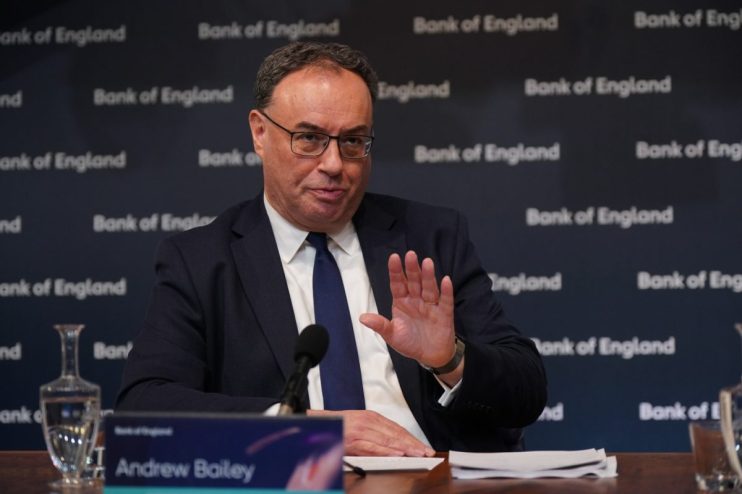With wage growth set to fall, the Bank of England should cut rates in August

Wage growth remains stubbornly high despite the rise in unemployment and fall in hiring. However, this is not a signal for the Bank to hold off on cutting interest rates, Chris Dorrell argues
At the turn of the year markets thought it was a certainty that interest rate cuts would be well underway by the end of summer. How things have changed.
Now, as the Bank of England’s August meeting slowly draws near, markets put the odds of a rate cut at little more than a coin toss.
There’s a number of explanations for this change, but one of them is the continued tightness of the labour market over the first half of the year. One of the Bank’s main concerns has been that a tight labour market has put up costs for firms, which feed through into higher prices for consumers.
More data will be released on Thursday, but over the last few days the UK’s three largest recruitment firms have all released trading updates for the last three months. The story was the same in each case.
At Hays and Pagegroup, fees from the UK market were down 17 per cent on last year. Robert Walters meanwhile reported an 18 per cent fall in fees. All three reported that firms were cautious to take on new staff given the uncertain macroeconomic outlook.
Toby Fowlston, Robert Walters boss, did not think that things would turn around fast. “Our near-term planning now assumes that any material improvement in confidence levels will be gradual, and likely not occur before 2025,” he said on Monday morning.
Surveys on the labour market paint a similar picture. According to the latest jobs survey from KPMG and the Recruitment and Employment Confederation (REC), permanent staff appointments fell at their steepest pace in three months in June.
Staff availability also continued to increase for the 16th consecutive month, as firms laid off more workers.
According to the Office for National Statistics (ONS), unemployment has increased for four consecutive months, rising from 3.8 per cent at the end of 2023 to 4.4 per cent.
Remember, the ONS is in the process of revamping its data collection methods, so there is genuine uncertainty about the official unemployment rate. But either way, both the official data and business surveys paint a clear picture of the wider trend: there are more people going after fewer jobs.
However, wage growth has not fallen by nearly enough to soothe concerns among rate-setters.
The latest figures showed annual pay growth excluding bonuses averaged 6.0 per cent between February and April, about twice the level consistent with inflation remaining at two per cent sustainably.
The latest data from Indeed actually showed a small acceleration in wage pressures in June, with annual wage growth picking up to almost match its peak in 2023. Multiple different sectors and pay brackets saw wages rise, suggesting it was not all a consequence of April’s near 10 per cent increase in the National Living Wage.
Bank officials are confident that wage growth will fall in the months ahead, reflecting the looser labour market, but there’s a lot of uncertainty about how much and how quickly wage pressures will ease. This is why the Monetary Policy Committee (MPC) has been fairly cautious on rates so far.
There are some indications, however, that wages might start dropping more substantially in the near future.
An important factor determining how wider supply and demand dynamics filter through into wage growth is the efficiency with which workers are matched with vacancies. At the peak of the pandemic, firms faced real difficulties finding the right workers which contributed to soaring pay growth.
This is no longer such a major problem. A Bank of England survey from June suggested that less than half of firms are finding it more difficult than average to recruit for open roles, down from the 87 per cent peak in early 2021.
The number of unfilled vacancies has also fallen by nearly 30 per cent since the peak of the pandemic.
“Labour market mismatches have eased,” Sanjay Raja, chief UK economist at Deutsche Bank said in a recent note, suggesting this should give the MPC “some assurance that wage growth will naturally slow”.
Monetary policy needs to be forward looking, reflecting where inflation is going rather than where it is. Barring any surprises this week, the Bank should feel confident enough to cut rates in August.